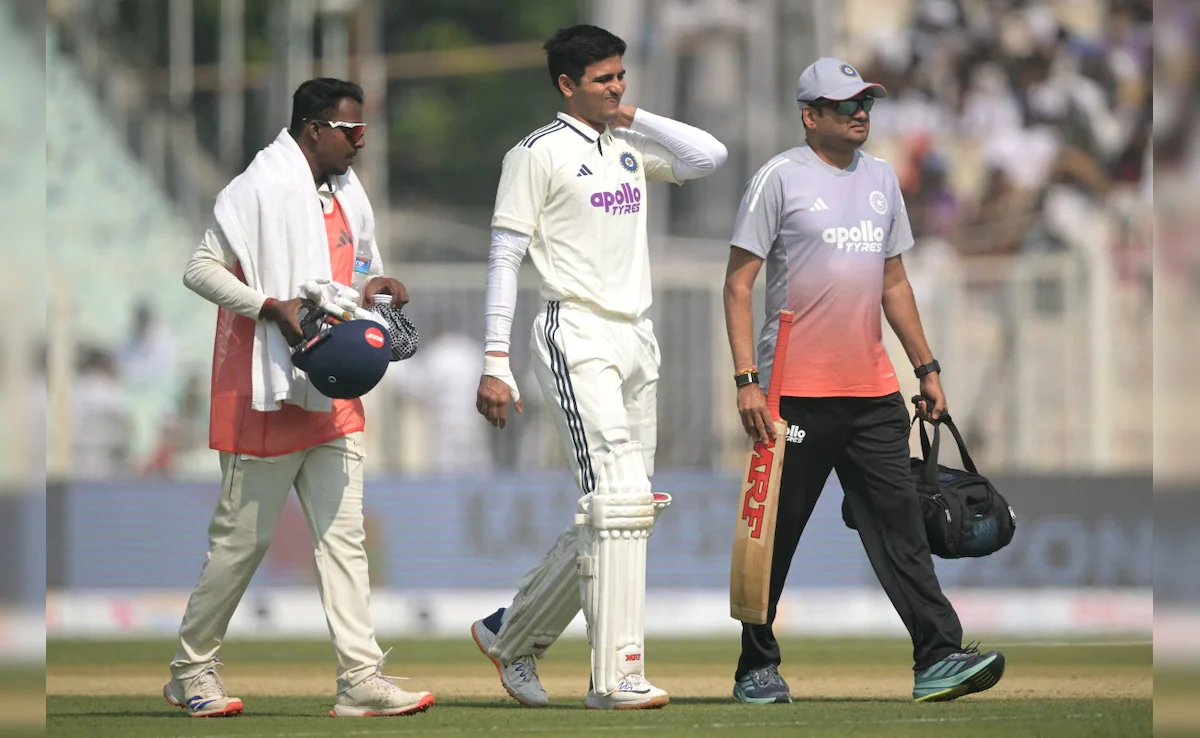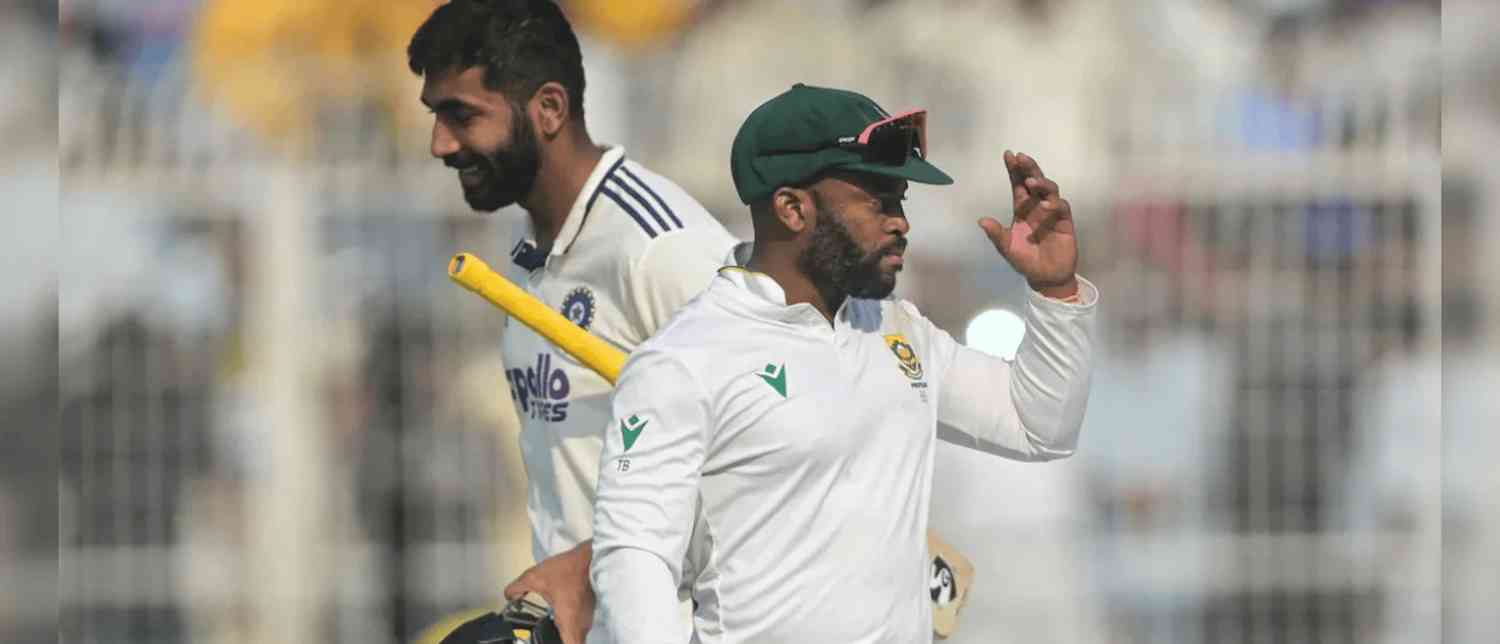India’s humbling defeat to South Africa in the opening Test at Kolkata’s Eden Gardens has triggered far more than disappointment — it has opened the floodgates of introspection, debate, and concern about where Indian Test cricket is truly headed. What was once considered an indomitable fortress of spin dominance and home advantage now appears riddled with cracks that opponents have begun ruthlessly exploiting. And in Kolkata, these cracks widened into a glaring, damaging fault line.
Spin, India’s long-celebrated cricketing strength, is threatening to become an unexpected vulnerability. The loss wasn’t just about a pitch that backfired or a single exceptional performance from South Africa’s Simon Harmer — it became a full-blown revelation of deeply rooted issues in strategy, player development, and mindset.
South Africa, despite entering as supposed underdogs against the top-ranked Test side, delivered a performance that left India rattled. Harmer’s eight-wicket match haul, aided by Keshav Maharaj's control, exposed the Indian batting order in a manner that felt eerily familiar to home losses of the past decade. As Eden Gardens’ long-awaited return to Test cricket ended in just two-and-a-half days, the defeat left behind a trail of questions India can no longer afford to postpone.

Spin—India’s Strength or Emerging Achilles Heel?
Indian cricket has always taken pride in producing batters with nimble footwork, supple wrists, and an innate ability to dominate spin. From Sunil Gavaskar and Mohinder Amarnath to Sachin Tendulkar, Rahul Dravid, and Cheteshwar Pujara, generations of Indian batters built careers on mastering the turning ball.
But the Kolkata Test highlighted a painful contradiction: India’s greatest strength may now be turning into their weakest link.
For the second time in recent years, a visiting spinner single-handedly dismantled India at home. Harmer joined an elite club of foreign spinners who enjoyed success on Indian soil—Muralitharan, Phil Edmonds, John Emburey, Tauseef Ahmed, Shaun Udal, Monty Panesar, Graeme Swann, Steve O’Keefe, Mitchell Santner, Ajaz Patel, and others.
India’s struggles aren't sudden. They’ve been simmering since the shocking 2012 loss to England in Mumbai, when Swann and Panesar shared 10 wickets. O’Keefe’s 12-fer in Pune 2017, Ajaz Patel’s historic 10-wicket innings in 2021, and New Zealand’s complete whitewash in 2024—where Santner and Patel shared 28 wickets—were warning signs. Kolkata confirmed the rot.
The Changing Nature of Cricket: A Format in Flux
One cannot ignore the generational shift in cricket. The rise of T20s and the diminishing relevance of 50-over cricket have forced players to adapt to quicker scoring, unorthodox techniques, higher risk-taking, and shorter batting durations. The long, grinding innings that Test cricket thrives on is becoming rare.
Earlier, Indian players honed their temperament and technique through County stints and domestic four-day cricket. Today, multi-format, multi-tasking cricketers juggle IPL, leagues abroad, and international schedules with little time to develop the red-ball resilience required to play long innings.
The result? A generation wired for acceleration, not preservation. The Kolkata Test brutally exposed this mismatch.

Team Selection at Eden Gardens: A Puzzling Combination
India’s playing XI at Kolkata raised eyebrows even before the first ball was bowled. For the first time since the 2012 Nagpur Test, India fielded four specialist spinners, three of whom were expected to contribute with the bat, including one at the crucial No. 3 position.
While Washington Sundar emerged as the only batter capable of playing the spinners with authority, his near-non-usage with the ball—just one over in the entire match—highlighted a deeper selection confusion. Why pick a bowler you don’t intend to bowl?
Playing six bowlers in a Test is a luxury reserved for extraordinary conditions. In Kolkata, it appeared more like an unnecessary gamble.
The decision to play two wicketkeepers—one primarily selected for batting form—further muddied the logic. Historically, dual-keeper selections made sense in unique circumstances (like with Chandrakant Pandit and Kiran More, or Dhoni and Karthik). Kolkata did not warrant such an approach.
Adding to the confusion was the exclusion of Karun Nair, a proven domestic red-ball performer, merely because of his struggles in English conditions. India had reserves like Sai Sudarshan and Devdutt Padikkal carrying drinks, yet opted for bits-and-pieces cricketers instead of specialists in a format that rewards specialization above all else.
A Pitch That Backfired Spectacularly
The Eden Gardens pitch was expected to be a slow turner—one that negated South Africa’s pace attack and brought India’s spinners into the game early. Instead, it turned into a treacherous, unpredictable surface reminiscent of a worn fifth-day wicket from the very first hour.
Balls shot low, reared up unexpectedly, or deviated sharply, leaving batters constantly guessing. This unpredictability neutralized traditional spin skills, rewarding instead anyone who bowled in the right areas—even if they lacked world-class pedigree.
South Africa’s bowlers adapted faster. India’s spinners struggled to impose control. The pitch, meant to be an ally, turned into an equalizer—one that punished India more than South Africa.
This raises a vital question: Why manufacture extreme conditions at home when Indian batters have already proven themselves in challenging away conditions, like the recent series in England?

South Africa Kept It Simple—and Superior
Under Temba Bavuma’s leadership, South Africa approached the match with clarity. Their batters were patient, their spinners relentless, and their quicks disciplined.
Bavuma himself produced a gritty half-century on the crumbling surface, showing that runs were possible with determination and luck. His resilience echoed memories of past Eden legends, and his leadership record—10 wins in 11 Tests—speaks for itself.
In contrast, India looked reactive, unsure, and tactically inconsistent.
-
The quicks couldn't maintain pressure early.
-
The fielding was below par, with dropped catches and fumbles giving South Africa extra lives.
-
Partnerships weren’t broken ruthlessly as needed.
-
The batting fell apart in the fourth innings once Shubman Gill was unavailable.
Indian Batting in Disarray
With Gill injured and Dhruv Jurel as the only specialist batter in the middle order, India’s chase looked doomed from the start. Once Jurel departed playing a rash shot, the collapse became inevitable.
What hurt India most was the absence of classical Test temperament—something Pujara and Kohli once embodied. Today’s young batters, though talented, are still learning how to survive on rank turners when aggressive strokeplay is not an option.
Axar Patel exemplified this struggle. He struck two sixes and a four, but in trying to repeat those high-risk strokes, he threw his wicket away. It was a T20 instinct triggered in a situation demanding Test discipline.

A Lesson in Self-Sabotage
This loss was not an accident. It was the culmination of:
-
flawed strategy
-
inconsistent selection
-
an overengineered pitch
-
tactical misjudgments
-
a batting order lacking defensive durability
-
fielding lapses
-
and a misplaced obsession with manufacturing home advantage
India have now lost four of their last eight home Tests—as many as they lost in the 12 years before that. This is no longer a trend; it is a crisis.
In chasing exaggerated home advantage, India ended up creating a scenario where:
-
the pitch neutralized their own strengths
-
the opposition gained confidence
-
the spinners became ineffective too quickly
-
and batting became a lottery
Gambhir himself admitted this was the surface India had requested—ironically sealing their own downfall.
A Fear-Driven Strategy, Not a Confidence-Driven One
The pitch seemed designed to eliminate South Africa’s pace attack rather than to amplify India’s superiority. It hinted at a fear-driven mindset—fear of Rabada, Jansen, and Co.—instead of trust in India’s batting or their increasingly strong pace battery.
A truly confident team would have asked for a sporting surface, not a manipulated one.
If India wants to preserve their home dominance, they must go back to fair, cricketing pitches—ones that reward skill, not luck, and allow true superiority to shine through.

What India Must Do Now
India still has time to recover ahead of the second Test in Guwahati on November 22. But mere quick fixes will not restore their aura. The revival must begin with:
-
trusting specialists over multi-format stopgaps
-
rebuilding defensive batting technique
-
encouraging four-day domestic cricket exposure
-
better squad consistency
-
selecting players for red-ball skill, not IPL form
-
focusing on fielding standards
-
stopping the creation of extreme pitches
-
backing pace and spin equally, without insecurity
Test cricket remains the ultimate examination of skill, character, and temperament. To succeed, India must return to traditional virtues—grit, patience, footwork, discipline—rather than relying on T20-inspired improvisations.
Reverse sweeps and slog sweeps thrill crowds, but survival and accumulation win Test matches. The time for introspection has arrived. The time for course correction must follow immediately.
With inputs from agencies
Image Source: Multiple agencies
© Copyright 2025. All Rights Reserved. Powered by Vygr Media.
























